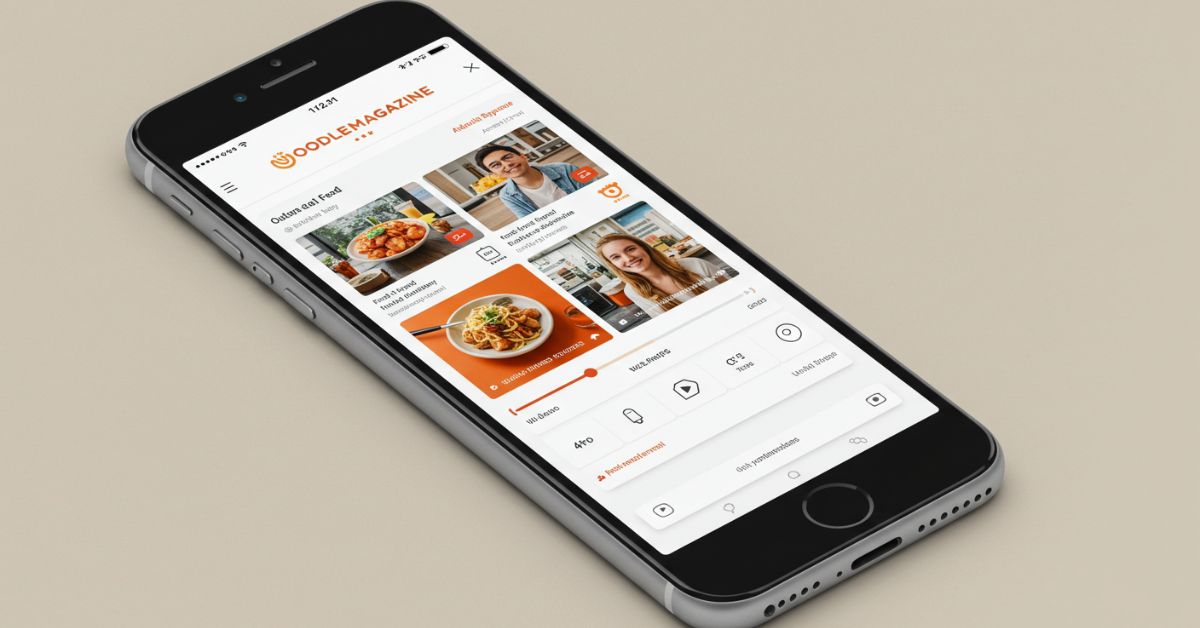In the constantly shifting landscape of web platforms, few names spark as much intrigue as Noodlemagazine. With its unconventional branding and minimalistic presence, this platform has slowly gained online traction—yet still remains largely under the radar for many users. While some visitors see it as a curious alternative to mainstream video platforms, others raise questions about its origin, safety, and long-term reliability.
In this article, we break down what Noodlemagazine offers, the potential risks involved, and what kind of user experience you can expect when browsing the site.
Contents
What Is Noodlemagazine?
Noodlemagazine is an online video-browsing platform known for offering free and unfiltered access to content without the typical roadblocks such as user registration, app installations, or heavy advertising banners. Its barebones structure and accessible interface appeal to a growing segment of internet users who prioritize speed, anonymity, and ease of access.
Though not a mainstream brand, it has grown organically through niche mentions on forums, content blogs, and community-driven spaces.
Key Features of Noodlemagazine
Despite its minimalistic look, Noodlemagazine delivers a handful of characteristics that contribute to its ongoing attention:
1. No Sign-Up Required
Users can access the content directly—no need for creating an account or sharing personal information. This “open-door” policy is attractive to privacy-conscious users.
2. Simple Interface
The website interface is designed to be intuitive and straightforward. There are no overly complex menus, suggesting the platform’s emphasis on speed over sophistication.
3. Fast Loading Times
Whether on desktop or mobile, Noodlemagazine performs well in terms of loading speed. This is especially helpful for users with slower internet connections or older devices.
4. No App Dependency
Unlike many content platforms that require an app download, Noodlemagazine is entirely browser-based. This reduces system clutter and avoids operating system limitations.
5. Cross-Device Compatibility
The site is optimized for a range of screen sizes. Users can access the same content whether they’re on a laptop, tablet, or smartphone.
Understanding the User Experience
So, what does a session on Noodlemagazine actually feel like? Here’s a breakdown of what typical users report:
● Instant Browsing
There are no long loading delays or pop-up interruptions. Visitors can begin exploring content immediately, often within seconds of landing on the homepage.
● Low Distraction Environment
There’s a notable absence of autoplay ads, sponsored content carousels, or promotional overlays. The interface sticks to core content browsing, offering a clutter-free space.
● Anonymity Preserved
Because there’s no login or personal account required, users aren’t tracked or profiled—at least not in any visible, account-based way.
● No Personalized Feed
Unlike YouTube or TikTok, the platform does not appear to use recommendation algorithms. Every user sees roughly the same browsing environment, which encourages organic discovery over curated suggestions.
Potential Risks of Using Noodlemagazine
While the features and user experience may feel refreshing, it’s important to acknowledge the possible risks associated with using lesser-known platforms like Noodlemagazine.
1. Unknown Ownership
One of the biggest concerns users raise is the lack of transparency regarding who operates Noodlemagazine. Without publicly listed creators, policies, or a digital footprint, it’s difficult to determine the site’s long-term goals or trustworthiness.
2. No Official Privacy Policy
Most reputable platforms publish clear privacy policies and terms of service. Noodlemagazine offers little in terms of official documentation, making it unclear how user data is handled, if at all.
3. No Security Certification
A quick look at the browser’s URL bar might show a lack of advanced SSL certificates or security seals. This can raise red flags for users concerned with data security and connection integrity.
4. Limited User Support
If users encounter technical issues or want to report inappropriate content, there appears to be no visible customer service or help desk system. This lack of a support structure can affect overall user confidence.
5. Possible Exposure to Unverified Content
Without moderation policies, there’s always a risk of encountering non-curated or low-quality content. While some users may appreciate this raw browsing experience, others might prefer more controlled environments.
Who Is Using Noodlemagazine?
The site appeals to a variety of users:
- Curious explorers looking for alternative content platforms
- Tech-savvy browsers who value speed and simplicity
- Mobile-first users seeking quick, on-the-go access
- Privacy enthusiasts who prefer platforms that don’t track or log their activity
Despite its limitations, this niche audience continues to grow—driven largely by word-of-mouth and social sharing.
Comparisons to Other Platforms
| Feature | Noodlemagazine | YouTube | Dailymotion |
|---|---|---|---|
| Account Required? | No | Yes (for features) | Optional |
| Mobile App Needed? | No | Yes | Yes |
| Ads and Monetization? | Minimal | Extensive | Moderate |
| Content Discovery | Organic | Algorithm-based | Curated |
| Data Privacy | Unclear | Detailed policies | Standard |
As shown above, Noodlemagazine positions itself differently by offering fewer barriers and fewer personalization features. Whether this is seen as a benefit or drawback depends largely on what users are looking for.
Final Verdict
Noodlemagazine is a platform that thrives on simplicity, accessibility, and mystery. It doesn’t follow the rules set by bigger content networks, nor does it try to replace them. Instead, it carves out its own identity as a low-profile, open-access video browser.
While this minimalism can be refreshing, users should remain cautious. Without transparency about ownership, security, or content moderation, Noodlemagazine should be used with an understanding of the risks.
If you’re curious, it may be worth a visit—but it’s best approached with a privacy-conscious mindset and standard internet safety practices.
